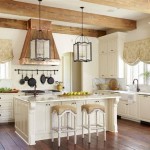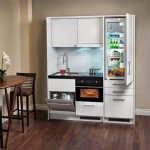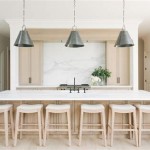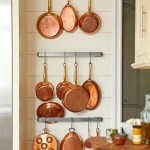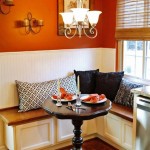```html
Farmhouse Decor Ideas for Kitchens
The farmhouse aesthetic has gained considerable popularity in interior design, particularly for kitchens. This style evokes a sense of warmth, comfort, and nostalgia, blending rustic charm with modern functionality. Successfully implementing farmhouse decor requires careful consideration of various elements, from color palettes and materials to specific accessories and layout considerations.
Integrating Natural Materials
One of the defining characteristics of farmhouse kitchen decor is the prominent use of natural materials. Wood, stone, and metal are frequently incorporated to create a sense of authenticity and connection to the outdoors. These materials can be applied in various ways, contributing to both the visual appeal and practical functionality of the space.
Wood: Reclaimed wood is a favored choice for farmhouse kitchens. It introduces a sense of history and character, often exhibiting unique imperfections and variations in texture. Reclaimed wood can be used for cabinetry, shelving, countertops, and even accent walls. The use of distressed wood, which mimics the appearance of aged timber, is another popular option. For those seeking a more refined look, butcher block countertops offer a warm, natural surface that is also highly functional for food preparation.
Stone: Stone elements contribute to the rustic feel of a farmhouse kitchen. Exposed brick walls, stone backsplashes, and stone flooring are all effective ways to incorporate this material. If incorporating natural stone is not feasible, consider using stone veneer or tiles that mimic the look and texture of natural stone. Neutral-toned stone, such as in shades of gray, beige, or cream, helps to maintain a classic and understated aesthetic.
Metal: Metal accents add an industrial edge to the farmhouse style, creating a balanced and visually interesting space. Common metal elements include copper sinks, stainless steel appliances, wrought iron lighting fixtures, and galvanized steel containers. Incorporating antique metal hardware, such as drawer pulls and cabinet knobs, can further enhance the vintage charm of the kitchen.
Implementing a Neutral Color Palette
A carefully selected color palette forms the foundation of any successful farmhouse kitchen design. Neutral colors, such as whites, creams, grays, and beiges, are typically used as the primary hues. These colors create a bright, airy, and inviting atmosphere, while also providing a versatile backdrop for accent colors and decorative elements.
White and Cream: White and cream are classic choices for farmhouse kitchens. These colors reflect light, making the space feel larger and more open. White cabinetry, walls, and ceilings create a clean and timeless look. Different shades of white and cream can be layered to add depth and visual interest. For example, a creamy white can be used for the walls, while a brighter white is used for the trim and cabinetry.
Gray: Gray is another popular neutral color for farmhouse kitchens. It offers a more modern and sophisticated alternative to white, while still maintaining a sense of calm and tranquility. Light grays, such as dove gray or pale gray, are particularly well-suited for kitchens. Gray can be used for cabinetry, walls, countertops, or even flooring. When using gray, it is important to balance it with warmer tones to prevent the space from feeling too cold or sterile.
Beige: Beige is a warm and inviting neutral color that works well in farmhouse kitchens. It adds a touch of earthiness and coziness to the space. Beige can be used for walls, flooring, or even countertops. Pair it with white or cream for a classic and timeless look, or combine it with bolder accent colors for a more modern and eclectic feel. Natural textures like wood and woven baskets complement beige tones beautifully.
Accent Colors: While neutral colors dominate farmhouse kitchens, carefully chosen accent colors can add pops of personality and visual interest. Soft pastel shades, such as light blue, sage green, or lavender, are often used to create a soothing and harmonious atmosphere. Brighter colors, such as red, yellow, or orange, can be used sparingly to add a touch of vibrancy and energy.
Focusing on Essential Farmhouse Decor Elements
Specific decor elements are crucial for establishing the farmhouse aesthetic in a kitchen. These elements contribute to the overall feel of the space and reinforce the desired sense of rustic comfort and charm. Strategic placement and selection of these items are key to achieving a cohesive and visually appealing design.
Farmhouse Sink: The farmhouse sink, also known as an apron-front sink, is a signature element of farmhouse kitchens. This type of sink is characterized by its exposed front, which extends beyond the countertop. Farmhouse sinks are typically made of fireclay, cast iron, or stainless steel, and they come in a variety of sizes and styles. The farmhouse sink is not only aesthetically pleasing but also highly functional, offering a large and deep basin for washing dishes and preparing food.
Open Shelving: Open shelving is another common feature of farmhouse kitchens. Instead of traditional upper cabinets, open shelves are used to display dishes, glassware, and other decorative items. Open shelving creates a more airy and open feel in the kitchen, while also allowing for easy access to frequently used items. Open shelves can be made of wood, metal, or a combination of both. It is important to keep open shelves organized and clutter-free to maintain a clean and visually appealing aesthetic.
Vintage and Antique Accents: Vintage and antique accents play a significant role in creating a farmhouse-inspired kitchen. These items add character, history, and a sense of nostalgia to the space. Consider incorporating antique scales, vintage canisters, enamelware pitchers, and old wooden cutting boards. Flea markets, antique stores, and estate sales are excellent resources for finding unique and authentic vintage pieces. When incorporating vintage accents, it is important to balance them with more modern elements to prevent the kitchen from feeling dated or cluttered.
Textiles: Textiles are essential for adding warmth, texture, and comfort to a farmhouse kitchen. Consider using natural fabrics, such as cotton, linen, and burlap, for window treatments, tablecloths, and seat cushions. Plaid, gingham, and floral prints are popular choices for farmhouse textiles. A simple linen tablecloth can transform a kitchen table into a gathering place, while a set of gingham curtains can add a touch of charm to the windows. Rugs, particularly those made of natural fibers like jute or sisal, can also add warmth and texture to the floor.
Lighting: Lighting is a crucial element in any kitchen design, and farmhouse kitchens are no exception. Wrought iron chandeliers, pendant lights with exposed bulbs, and sconces with vintage-inspired designs are all excellent choices for lighting a farmhouse kitchen. Natural light is also highly valued, so maximize the amount of sunlight that enters the space by using sheer curtains or leaving windows uncovered. Layering different types of lighting, such as ambient lighting, task lighting, and accent lighting, is essential for creating a well-lit and functional kitchen.
Plants and Herbs: Incorporating plants and herbs into a farmhouse kitchen adds a touch of life and freshness. Potted herbs on a windowsill, a vase of fresh flowers on the countertop, or a trailing plant on a shelf can all contribute to the overall ambiance of the space. Consider growing herbs in a small indoor garden, providing fresh ingredients for cooking and adding a touch of greenery to the kitchen. Plants can also help to purify the air and create a more inviting and relaxing atmosphere.
Hardware Selection: Seemingly small details such as hardware can significantly impact the overall aesthetic. Opt for oil-rubbed bronze, antique brass, or black iron finishes for cabinet pulls, knobs, and faucet fixtures. These finishes complement the rustic charm of the farmhouse style and contribute to the overall sense of authenticity. Consider using different styles of hardware for different cabinets to create visual interest and add a touch of personality.
By carefully considering these elements and adapting them to your own personal preferences and the specific characteristics of your kitchen, it is possible to create a beautiful and functional farmhouse-inspired space that reflects your individual style while staying true to the core principles of the design aesthetic.
```
Simple Functional European Farmhouse Style Kitchen Decor Ideas Open Doors Hearts

60 Timeless Farmhouse Kitchen Ideas For 2025

10 Ways To Style Farmhouse Decor Above Kitchen Cabinets

Decorating Shelves In A Farmhouse Kitchen

Farmhouse Kitchen Fall Decorating Ideas Sanctuary Home Decor

Farmhouse Spring Decorating Ideas And Home Tour

25 Cozy Farmhouse Kitchen Decor Ideas Shelterness

Spring Farmhouse Kitchen Decorating Home Decor

Simple Functional European Farmhouse Style Kitchen Decor Ideas Open Doors Hearts

Farmhouse Kitchen Fall Decorating Ideas Sanctuary Home Decor

